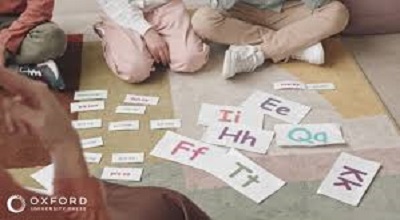Collaborative Class Activity
Collaborative Class Activity: In today’s dynamic educational landscape, interactive learning tools are revolutionizing classroom engagement. One such innovative method is the collaborative class activity with Turning Flashcards. This approach not only enhances student participation but also fosters teamwork, critical thinking, and retention.
At TeacherEducator.com, we believe in empowering educators with the latest teaching strategies. In this comprehensive guide, we’ll explore how Turning Flashcards can transform your classroom into an interactive and collaborative learning environment.
What Are Turning Flashcards?
Turning Flashcards are a modern twist on traditional flashcards, designed to promote active learning. Unlike static flashcards, these incorporate movement, discussion, and peer interaction, making them an excellent tool for group activities.
Key Features of Turning Flashcards:
- Interactive Learning: Encourages student participation.
- Collaborative Engagement: Promotes teamwork and discussion.
- Adaptability: Suitable for various subjects and age groups.
- Retention Boost: Reinforces learning through repetition and peer teaching.
Benefits of Collaborative Class Activities with Turning Flashcards
1. Enhances Student Engagement
Turning Flashcards make learning fun and interactive, keeping students actively involved in the lesson.
2. Encourages Peer Learning
Students learn from each other by discussing concepts, correcting mistakes, and reinforcing knowledge.
3. Improves Retention & Recall
The combination of visual cues and group discussion strengthens memory retention.
4. Develops Communication Skills
Students articulate their thoughts, ask questions, and engage in meaningful discussions.
5. Adaptable for Different Subjects
Whether it’s vocabulary, math, science, or history, Turning Flashcards can be customized for any topic.
How to Implement Turning Flashcards in Your Classroom?
1: Prepare the Flashcards
- Create flashcards with questions on one side and answers on the other.
- Use digital tools like Quizlet or physical cards for hands-on activities.
2: Divide Students into Groups
- Group students in pairs or small teams (3-5 students per group).
- Assign roles (e.g., questioner, responder, facilitator).
3: Introduce the Activity Rules
- Explain how the flashcards will be used (e.g., timed rounds, peer quizzes).
- Encourage students to discuss answers before flipping the card.
4: Facilitate the Activity
- Monitor group discussions and provide guidance.
- Use a timer to keep the activity structured.
5: Review & Reflect
- Conduct a class discussion on key takeaways.
- Ask students to share what they learned from their peers.
Creative Variations of Turning Flashcard Activities
1. Speed Quiz Challenge
- Students race against the clock to answer as many flashcards as possible.
2. Peer Teaching Rounds
- Each student explains a flashcard concept to their group.
3. Flashcard Storytelling
- Students use flashcards to build a narrative (great for language arts).
4. Subject-Based Tournaments
- Turn the activity into a competitive quiz game with rewards.
5. Digital Flashcard Collaboration
- Use apps like Kahoot! or Anki for tech-integrated learning.
Real-World Applications & Success Stories
Educators worldwide have reported higher engagement and improved test scores after implementing Turning Flashcards.
- Case Study 1: A middle school teacher saw a 20% increase in vocabulary retention after using collaborative flashcard drills.
- Case Study 2: A university professor used digital flashcards for exam prep, leading to higher student satisfaction.
Common Challenges & Solutions
1: Unequal Participation
- Solution: Assign roles and rotate them to ensure everyone contributes.
2: Off-Task Behavior
- Solution: Set clear expectations and use timed rounds to maintain focus.
3: Difficulty in Creating Flashcards
- Solution: Use pre-made templates or student-generated flashcards.
FAQs About Collaborative Turning Flashcards
1. How do Turning Flashcards differ from traditional flashcards?
Turning Flashcards emphasize collaboration and movement, whereas traditional flashcards are often used individually.
2. What age group is best suited for this activity?
This method works for all ages, from elementary to higher education, with adjusted complexity.
3. Can digital tools be used for Turning Flashcards?
Yes! Platforms like Quizlet, Kahoot!, and Anki enhance digital collaboration.
4. How often should I use Turning Flashcards in class?
For best results, incorporate them 1-2 times per week as a review or warm-up activity.
5. Do Turning Flashcards work for remote learning?
Absolutely! Virtual breakout rooms and shared digital flashcards make remote collaboration effective.
Conclusion
Collaborative class activities with Turning Flashcards are a powerful, engaging, and effective way to enhance learning. By integrating this method into your teaching strategy, you can foster a more interactive and student-centered classroom.
